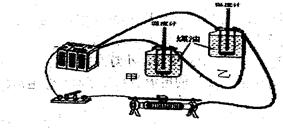You are a German living in Berlin. One day you’ re walk¬ing down the street, minding your own business, when sudden¬ly a stranger comes up with a smile on his face. After stopping you, he holds a small electronic device (装置) close to his face and speaks slowly into it, saying, in English," Can you tell me where I can buy some sauerkraut?" What should you do? (a) Run away; (b) Call the police; or (c) Listen closely for the device to say in German," Konnen Sie mir bitte sagen, welches sauerkraut haufen kann?"
The most proper answer would be (c) because the person in front of you is only a tourist trying to enjoy himself. The de¬vice is said to be the world’s first portable(便携的) translator — a hand-held microcomputer that at the same time translates one spoken language into another. The four-pound, battery-op¬erated product is called the Voice, and it is the invention of Advanced Products and Technologies, an American electronics company. When the Voice is introduced in the Unite States in late April — at a price of (1,500 — it will be used to trans¬late spoken English into Italian, German, French and Span¬ish. The product comes with separate cartridges(盒式存储器) for each of the four languages, which can be changed when the user travels from one country to another. It will be sold in Eu¬rope soon after the US introduction, with cartridges that trans¬late Italian, German, French and Spanish into English.
The Voice uses a microchip(微型集成电路片) to trans¬late languages. It is Started by voice command and produces voice output through a built-in speaker. When the user makes a statement or asks a question, the Voice immediately repeats what has been said in another language.
1. The device held by the stranger is probably a kind of________.
A. a two-way radio B. language translator
C. easily-carried speaker D. a multi-functioned computer
2. What does the last sentence of the first paragraph mean?
A. Can you tell me where I can buy some sauerkraut?
B. Can I ask for some information from the police?
C. Would you like to try my device?
D. Would you not run away if I ask you where to buy some sauerkraut?
3. When the stranger says," Can you tell... sauerkraut?" he is ________.
A. learning German from his device
B. asking you the way to the sauerkraut shop
C. making fun of you with his device
D. testing his device for fun
4. Which of the following is not mentioned in the text?
A. The price of the hand-held microcomputer.
B. The function of the product Voice.
C. The producer pf the small electronic device.
D. The number of the device sold to the European coun¬tries.

 得,在电压一定时,电阻越小,产生的热量越多.因为甲导线电阻小,乙电阻阻值大.
得,在电压一定时,电阻越小,产生的热量越多.因为甲导线电阻小,乙电阻阻值大.